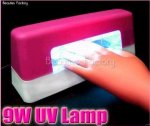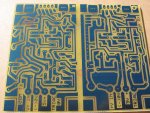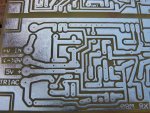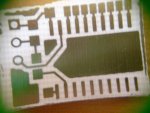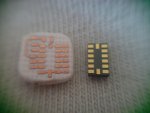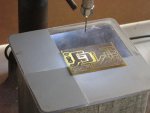Don't know , you're the Prof 
Nothing via Google?
Make something and try it.
Just as a guide, my proper UV box has 3 tubes and exposure time using clear laser sheet is < 2minutes .
Developing time using Seno (from Mega) is about 30 seconds at room temp.
(Fotoboard2 FR4).
David, I really don't know. It may be wonderful.
But I do know 3 things (that's all).
1. Nothing lasts forever.
2. By it's nature, an etchant has to be nasty.
3. There's no such thing as Magic.
I'm sure if it was the Great Solution then the Big Boys would use it to save time and running costs.
Maybe it's a disposal regulatory thing? I really can't guess.
Needless to say, you WILL be disposing of the exhausted chemicals in compliance with your local regulations won't you.....
Oh, what was that? I've just seen a flying pig
David, why not get a proper heater?
Why not ask Mega for a heater as a Service part? (For a Bubble Etcher)
It's better than a bodge which could fail badly.
My Bubble Etcher is 7 years old so I can vouch for Mega quality and reliability (well, strictly speaking, the quality 7 years ago!).
So, it may cost 5x more than a bodge but last 50 times longer...
Up to you.
Nothing via Google?
Make something and try it.
Just as a guide, my proper UV box has 3 tubes and exposure time using clear laser sheet is < 2minutes .
Developing time using Seno (from Mega) is about 30 seconds at room temp.
(Fotoboard2 FR4).
David, I really don't know. It may be wonderful.
But I do know 3 things (that's all).
1. Nothing lasts forever.
2. By it's nature, an etchant has to be nasty.
3. There's no such thing as Magic.
I'm sure if it was the Great Solution then the Big Boys would use it to save time and running costs.
Maybe it's a disposal regulatory thing? I really can't guess.
Needless to say, you WILL be disposing of the exhausted chemicals in compliance with your local regulations won't you.....
Oh, what was that? I've just seen a flying pig
David, why not get a proper heater?
Why not ask Mega for a heater as a Service part? (For a Bubble Etcher)
It's better than a bodge which could fail badly.
My Bubble Etcher is 7 years old so I can vouch for Mega quality and reliability (well, strictly speaking, the quality 7 years ago!).
So, it may cost 5x more than a bodge but last 50 times longer...
Up to you.

